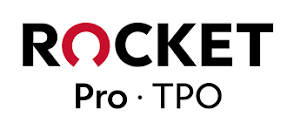LENDING PARTNERS







LOAN PROGRAMS
The most common type of loan option, the traditional fixed-rate mortgage includes monthly principal and interest payments which never change during the loan’s lifetime.
Adjustable-rate mortgages include interest payments which shift during the loan’s term, depending on current market conditions. Typically, these loans carry a fixed-interest rate for a set period of time before adjusting.
Hybrid ARM mortgages combine features of both fixed-rate and adjustable rate mortgages and are also known as fixed-period ARMs.
FHA home loans are mortgages which are insured by the Federal Housing Administration (FHA), allowing borrowers to get low mortgage rates with a minimal down payment.
VA loans are mortgages guaranteed by the Department of Veteran Affairs. These loans offer military veterans exceptional benefits, including low interest rates and no down payment requirement. This program was designed to help military veterans realize the American dream of home ownership.
Interest only mortgages are home loans in which borrowers make monthly payments solely toward the interest accruing on the loan, rather than the principle, for a specified period of time.
Prior to choosing a home loan, you should know the advantages and risks of adjustable-rate mortgages to make an informed, prudent decision.
This article includes a list of the most commonly used indexes by ARM lenders that affect ARM mortgage rates.
Balloon mortgages include a note rate that remains fixed initially, and the principal balance becomes due at the end of the mortgage term.
Reverse Mortgages allow senior homeowners to convert a portion of their home equity into cash while still living in the home.
Graduated Payment Mortgages are loans in which mortgage payments increase annually for a predetermined period of time (e.g. five or ten years) and becomes fixed for the remaining duration of the loan.
Should you get a fixed-rate or adjustable rate mortgage? A conventional loan or a government loan? Deciding which mortgage product is best for you will depend
largely on your unique circumstances, and there is no one correct answer.
LOAN PROCESS
Step 1: Find Out How Much You Can Borrow
The first step in obtaining a loan is to determine how much money you can borrow. In case of buying a home, you should determine how much home you can afford even before you begin looking. By answering a few simple questions, we will calculate your buying power, based on standard lender guidelines.
You may also elect to get pre-approved for a loan which requires verification of your income, credit, assets and liabilities. It is recommended that you get pre-approved before you start looking for your new house so you:
Step 2: Select the Right Loan Program
Home loans come in many shapes and sizes. Deciding which loan makes the most sense for your financial situation and goals means understanding the benefits of each. Whether you are buying a home or refinancing, there are 2 basic types of home loans. Each has different reasons you’d choose them.
1) Fixed Rate Mortgage: Home loans come in many shapes and sizes. Deciding which loan makes the most sense for your financial situation and goals means understanding the benefits of each. Whether you are buying a home or refinancing, there are 2 basic types of home loans. Each has different reasons you’d choose them.
Step 3: Apply For A Loan
Step 4: Begin Loan Processing
Although lenders conform to standards set by government agencies, loan approval guidelines vary depending on the terms of each loan. In general, approval is based on two factors: your ability and willingness to repay the loan and the value of the property.
Once your loan application has been received we will start the loan approval process immediately. Your loan processor will verify all of the information you have given. If any discrepancies are found, either the processor or your loan officer will troubleshoot to straighten them out. This information includes:
Step 5: Close Your Loan
After your loan is approved, you are ready to sign the final loan documents. You must review the documents prior to signing and make sure that the interest rate and loan terms are what you were promised. Also, verify that the name and address on the loan documents are accurate. The signing normally takes place in front of a notary public.
There are also several fees associated with obtaining a mortgage and transferring property ownership which you will be expected to pay at closing. Bring a cashiers check for the down payment and closing costs if required.
CONTACT US

